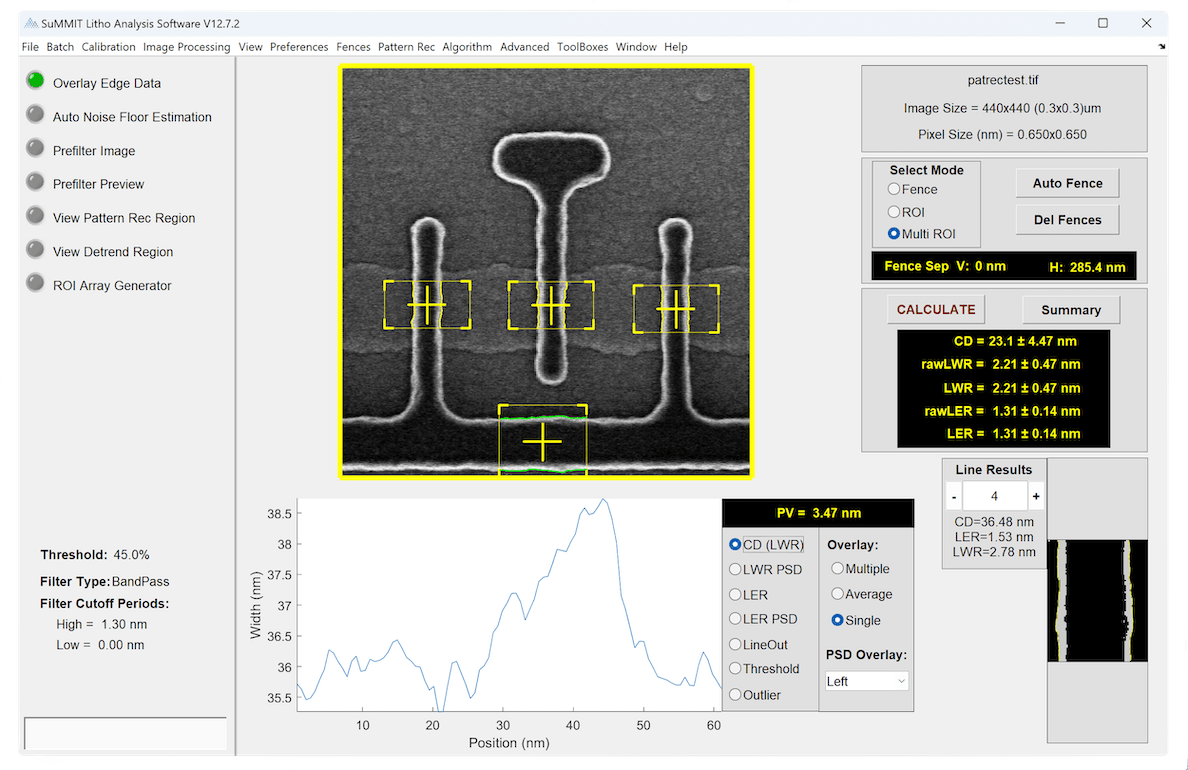
SuMMIT Contact Analysis/2D Toolbox
The Contact Analysis/2D Toolbox adds contact metrology capabilities to SuMMIT.
These capabilities include autofencing for contacts and a variety of contact-specific metrics in addition to conventional LER metrics, where instead of comparing the edge to a line, it is compared to some reference shape, such as a circle or ellipse. Full control over the contact-analysis recipe is provided through an additional tab in the SuMMIT recipe tool.
This toolbox also provides a new contact-metric plot tool that allows the user to select both the plot type and the specific metric to plot. The recipe control includes mechanisms to remove systematic effects from the contact roughness due to asymmetry in the contact or squarish corners.
Included with the Contact Analysis/CD toolbox is the Multi-ROI tool that allows SuMMIT to be operated in multiple-ROI mode. This mode works with both lines and contacts, allowing the user to select multiple discrete regions for simultaneous analysis. The regions need not be the same size, and horizontal and vertical features can be analyzed simultaneously.
This toolkit is also compatible with the contact analysis mode and includes an ROI-array generator tool, which enables an easily defined grid of ROIs with arbitrary spacing, size, stagger, and offset.
With the Contact Analysis toolbox, SuMMIT can be used to characterize contact holes and posts.
This toolbox provides a custom-recipe area and provides a variety of contact metrics in addition to roughness numbers. These metrics include diameter, major and minor axis widths, orientation, perimeter, area, circularity and eccentricity. The values are presented through the Advanced Contact Results window that shows both the average results for a field of contacts and the specific results for each analyzed contact.
The toolbox also includes the Contact Metric Plot tool that allows the above metrics to be visualized in a variety of ways.
The Contact Analysis toolbox supports all the LER analysis, comparing the contact edge to a reference shape. Circle and elliptical reference shapes are supported, enabling oblong contacts to be analyzed.
This toolbox includes post-processing capabilities that enable systematic harmonic errors to be removed from the line-edge data enabling; for example, the analysis of features such as slots, square contacts and triangular contacts.

